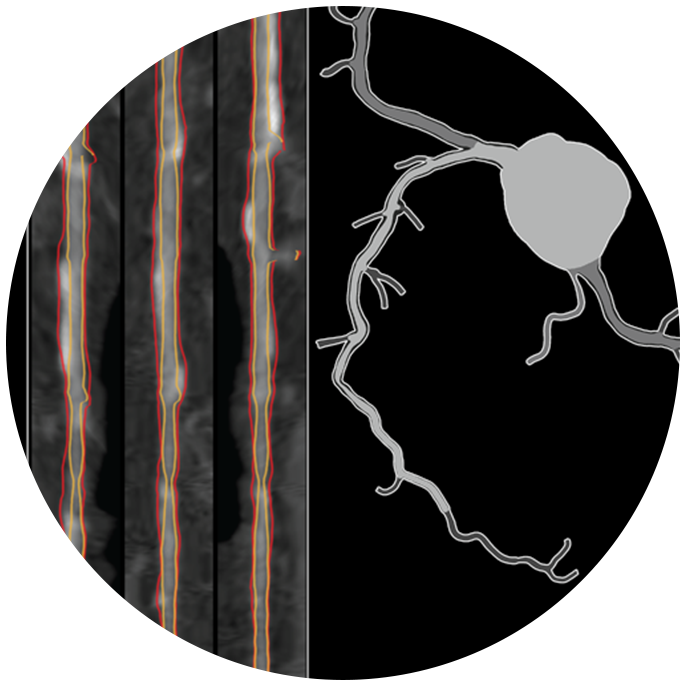
Accurate. Comprehensive. Actionable.
Accurate.
Comprehensive.
Actionable.

As part of the HeartFlow ONE precision coronary artery disease (CAD) management solution, HeartFlow Plaque Analysis provides more complete data on the type of plaque present to help physicians accurately assess a patient’s risk for CAD and provide a personalized treatment plan. Combined with anatomy and physiology, now physicians can more confidently provide precise care for each patient.
Specific plaque characteristics, such as low attenuation plaque, have proven to correlate with higher risk.3
HeartFlow Plaque Analysis demonstrated a 95% agreement compared to IVUS in quantification and characterization of total plaque volume.2
HeartFlow Plaque Analysis demonstrated a 95% agreement compared to IVUS in quantification and characterization of total plaque volume.2
Total Plaque Volume
95%
Agreement with IVUS
Total Plaque Volume
95%
Agreement with IVUS
A real-world, multi-site, and largest prospective registry of its kind that will evaluate changes in treatment management decisions when physicians use HeartFlow’s Plaque Analysis.
Using a large international cohort, HeartFlow analyzed more than 11,000 CCTAs to stratify total coronary atherosclerotic plaque volumes by age and sex.4 Physicians can utilize this data to help manage and optimize patient care.
Using a large international cohort, HeartFlow analyzed more than 11,000 CCTAs to stratify total coronary atherosclerotic plaque volumes by age and sex.4 Physicians can utilize this data to help manage and optimize patient care.
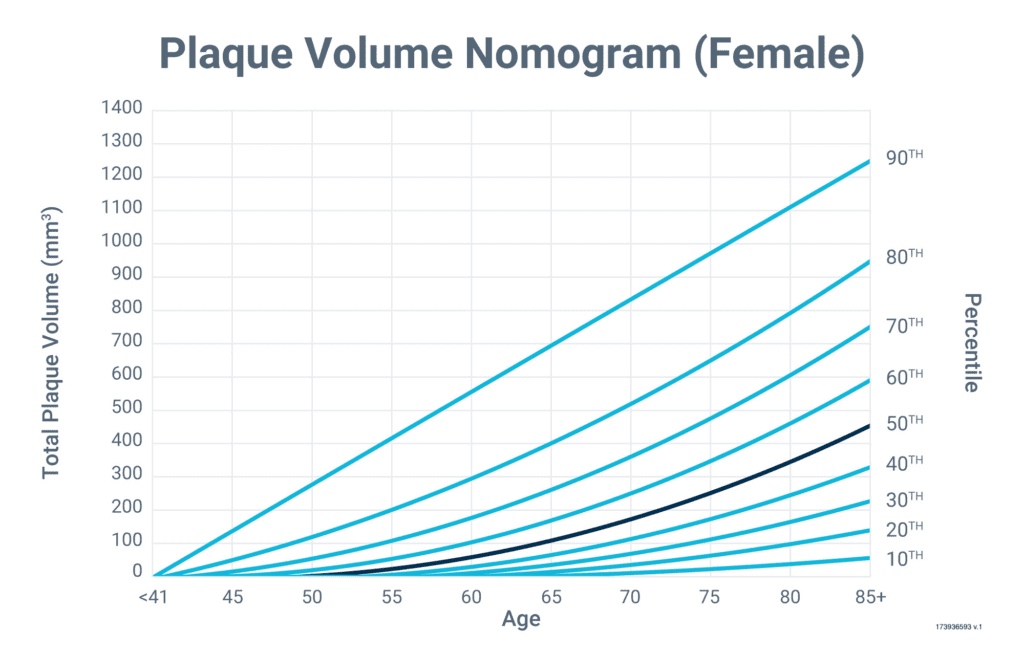
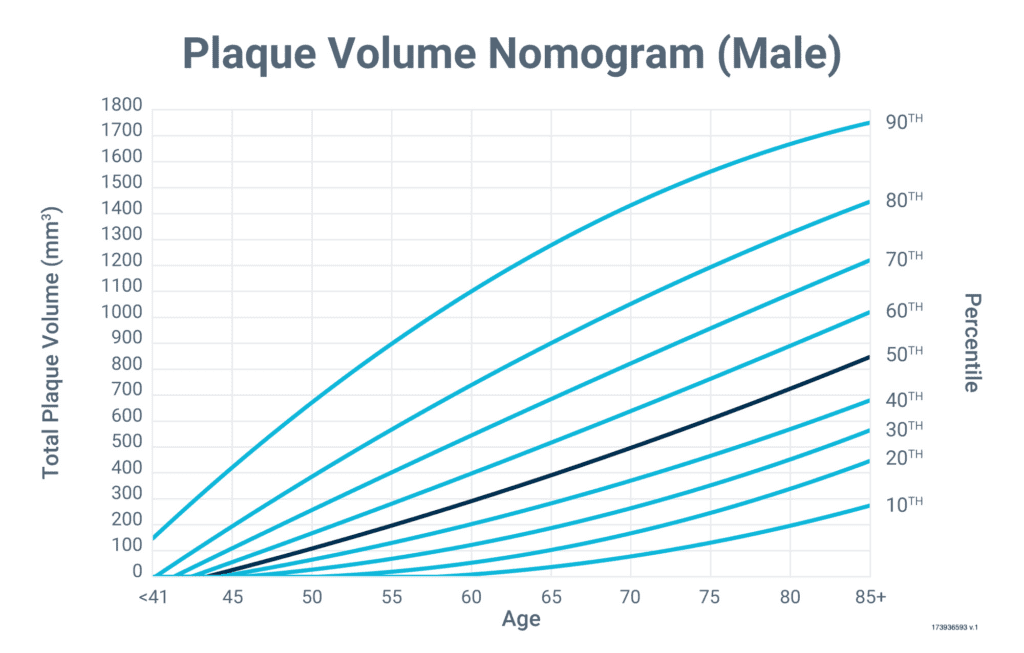


2 out of 3 patients
2 out of 3 patients
received a refined management plan following physician review of the HeartFlow AI-Plaque Analysis.5
with a calcium score of 0 were reclassified.
received a refined management plan following physician review of the HeartFlow AI-Plaque Analysis.5
with a calcium score of 0 were reclassified.
Treat patients with the only fully integrated solution for precision CAD management.
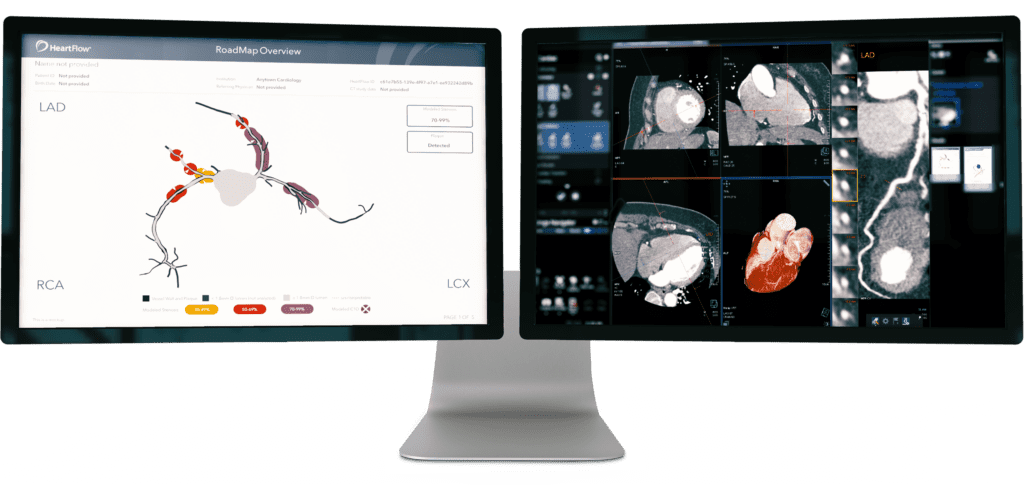

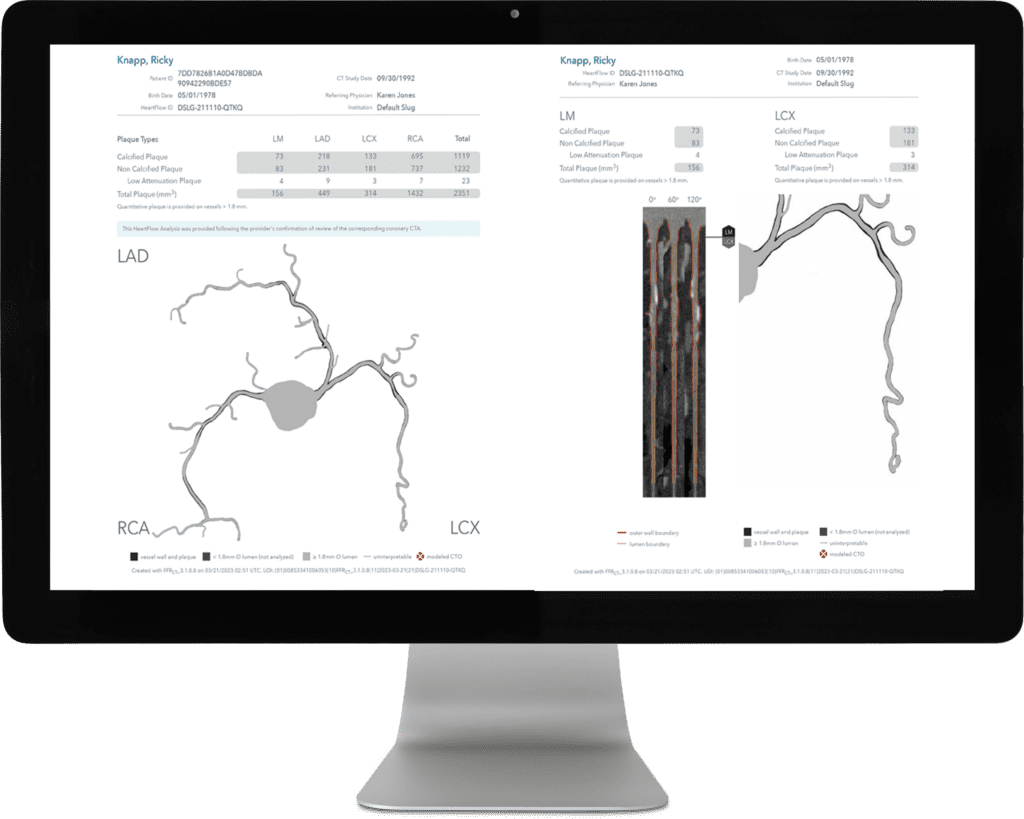
REFERENCES:
1. Lee, et al. JACC Cardiovasc Imaging 2019.
2. REVEALPLAQUE Study, presented at SCCT 2023.
3. New by, D. et al. Lancet 2015.
4. Tzimas et al. JACC 2023.
5. DECODE Study, presented at SCCT 2023.




The information provided by the HeartFlow Analysis is intended to be used in conjunction with the patient’s clinical history, symptoms, and other diagnostic tests, as well as the clinician’s professional judgement. The HeartFlow Analysis may not be appropriate for all patients. See indications for use for more information. The HeartFlow Analysis, featuring the FFRCT Analysis, RoadMapTM Analysis, Plaque Analysis, and HeartFlow Planner, has received FDA Clearance in the United States of America. The FFRCT Analysis and HeartFlow Planner are CE Marked in Europe and the United Kingdom and approved in Japan and Canada. The HeartFlow Analysis, featuring FFRCT Analysis, RoadMapTM Analysis, Plaque Analysis, and HeartFlow Planner, is commercially available in the United States. The FFRCT Analysis and HeartFlow Planner are commercially available in the United Kingdom. The FFRCT Analysis is also commercially available in Europe, Japan, and Canada.
© 2024 HeartFlow, Inc. | HeartFlow and the HeartFlow logo are registered trademarks of HeartFlow, Inc. Additionally, RoadMap is claimed as a trademark of HeartFlow, Inc. www.heartflow.com | 331 E Evelyn Ave, Mountain View, CA 94041
*Required fields
If you would like to request to have the HeartFlow Analysis available at a location near you, please submit your information below with details of the institution. We will share this information with the institution, but it will not guarantee HeartFlow will become available.
*Required fields
オンライン提出フォームから研究助成金を申請してください。
HeartFlow FFRCT 分析は、有資格の臨床医による臨床的に安定した症状のある冠状動脈疾患患者への使用を目的とした個別化された心臓検査です。 HeartFlow Analysis によって提供される情報は、資格のある臨床医が患者の病歴、症状、その他の診断検査、および臨床医の専門的判断と組み合わせて使用することを目的としています。
ハートフロー分析に関する追加の適応情報については、次のサイトをご覧ください。www.heartflow.com/indications.
さらに質問がある場合は、このメッセージを閉じてフォームに記入するか、サポート チームにお電話ください。: 877.478.3569.
The HeartFlow FFRCT Analysis is a personalized cardiac test indicated for use in clinically stable symptomatic patients with coronary artery disease by qualified clinicians. The information provided by the HeartFlow Analysis is intended to be used by qualified clinicians in conjunction with the patient’s history, symptoms, and other diagnostic tests, as well as the clinician’s professional judgement.
For additional indication information about the HeartFlow Analysis, please visit www.heartflow.com/indications.
If you have additional questions, close out of this message to complete our form or call our support team: 877.478.3569.Please use our online submission form on the Clinical Research Page to apply for research grants.
Thank you for your interest!

Executive Vice President and Chief Medical Officer
Campbell brings a wealth of experience to HeartFlow, where he serves as the Chief Medical Officer. Prior to joining HeartFlow, he was the Chief Scientific Officer and Global Head of Research and Development at Cordis Corporation, Johnson & Johnson, where he was responsible for leading investments and research in cardiovascular devices. Prior to Cordis, he was Associate Professor of Medicine at Harvard Medical School and the Harvard-M.I.T. Division of Health Sciences and Technology, and Director of the Cardiac Catheterization and Experimental Cardiovascular Interventional Laboratories at Brigham and Women’s Hospital. He served as Principal Investigator for numerous interventional cardiology device, diagnostic, and pharmacology trials, is the author of numerous journal articles, chapters, and books in the area of coronary artery and other cardiovascular diseases, and was the recipient of research grant awards from the NIH and AHA.
He received his A.B. from Harvard College and his M.D. from Harvard Medical School.